| Amount Per 1 bagel | |||
| Calories | 230 Kcal (963 kJ) | ||
| Calories from fat | 18 Kcal | ||
| % Daily Value* | |||
| Total Fat | 2g | 3% | |
|---|---|---|---|
| Sodium | 400mg | 17% | |
| Potassium | 70mg | 1% | |
| Total Carbs | 46g | 15% | |
| Sugars | 8g | 32% | |
| Dietary Fiber | 2g | 8% | |
| Protein | 8g | 16% | |
* Percent Daily Values are based on a 2000 calorie diet. Your daily values may be higher or lower depending on your calorie needs.
Find out how many calories should you eat.
Ingredients And Nutrition Overview
Best
choice Good
choice Poor
choice Avoid
it!
choice Good
choice Poor
choice Avoid
it!
-
WeightWatchers Points: 4.4, PointsPlus: 6, SmartPoints: 7
WeightWatchers Points are estimated by carbohydrates, fats, protein and fiber in product. They are not an affirmation of better quality or nutritional value of the product or its manufacturer. Only way to count for dieters. Less points are better.
Read more at Weight watchers diet review -
2 tsp of sugars per serving
This includes both naturally occurring and added sugars. According to the USDA, every man woman and child in the US consumes approximately 80 pounds of caloric sweeteners per year! That works out to 25 tsp of sugars per day, or 400 extra calories!
-
Contains controversial artificial colors
Once upon a time, there were no food colorings. Then folks figured out that food looks better and sells more when it can be enlivened through dyes. For most of food history, the dyes were from natural sources – beet juice for red, turmeric for yellow,etc… However, in the quest to increase color intensity and lower manufacturing costs, cheap artificial dyes were introduced to market. Unfortunately they pose a risk for hyperactivity in children, cancer, and allergic reactions. ----------- Sources: Feingold BF. Hyperkinesis and learning disabilities linked to artificial food flavors and colors. Am J Nurs 1975; 75-5: 797-803. Harley JP, Matthews CG, Eichman P. Synthetic Food Colors and Hyperactivity in Children: A double-blind challenge experiment. Pediatrics 1978; 62: 975-983. Kobylewski S, Jacobson M. Toxicology of food dyes. Int J Occup Env Heal 2012; 18-3: 220-246. McCann D, Barrett A, Cooper A, Crumpler D, Dalen L, Grimshaw K, Kitchin E, Lok K, Porteous L, Prince E, Sonuga-Garke E, OWarner J, Stevenson J. Food additives and hyperactive behavior in 3-year-old and 8/9-year-old children in the community: a randomized, double-blinded, placebo-controlled trial. Lancet 2007; 370: 1560-67. Schab DW, Trinh NT. Do artificial food colors promote hyperactivity in children with hyperactive syndromes? A meta-analysis of double-blind placebo-controlled trials. J Dev Behav Pediatr 2004; 25: 423-434. Sonuga-Barke EJS, Hollis C, Brandeis D, Konofal E, Cortese S, Lecendreux M, Daley D, Wong I, Ferrin M, Sergeant J, Holtmann M, Stevenson J, Danckaerts M, Van Der Oord S, Dopfner M, Dittmann R, Simonoff E, Zuddas A, Banaschewski T, Buitelaar J, Coghill D. Nonharmacological interventions for ADHA: Systematic review and meta-analyses of randomized controlled trials of dietary and psychological treatments. Am J Psychiatry 2013; 170-3: 275-289. Stevens LJ, Kuczek T, Burgess JR, Hurt E, Arnold LE. Dietary sensitivities and ADHD symptoms: Thirty-five years of research. Clin Pediatr 2011; 50:279-293. Williams JI, Cram DM, Tausig FT, Webster E. Relative effects of drugs and diet on hyperactive behaviors: An experimental study. Pediatrics 1978; 61-6: 811-817.
-
For dieters: FoodPoints value is 6
* FoodPoints are calculated by Fooducate based on fats, carbs, fiber, and protein. They are not an endorsement or approval of the product or its manufacturer. The fewer points - the better.
-
Highly Processed!
This product is highly processed. If you'll take a look at its ingredient list, you'll discover new words to add to your vocabulary. Many of theses ingredients are required to increase the shelf life of the product and improve the flavor that disappears when food is not fresh.
-
No whole grains here
Whole grains are a great source of fiber and other nutrients. Fiber is one of the most important nutrients lacking in the modern American diet. Unfortunately, this product does not contain enough whole grains, if any. If there is fiber in here, it's probably added fiber and not naturally occurring. Whole grains are not the only way to consuming fiber, BUT by choosing them instead of processed grains you've made a smart choice. If you'd like to eat a bit better, try for something that contains whole grains.
-
Contains glycerides
Mono and diglycerides are commonly used in processed foods to maintain stability in liquid products and "improve" quality in baked goods. These glycerides could be created using both hydrogenated and partially hydrogenated oils or animal fats. In theory, this may transfer a small amount of trans fats into the product. The glycerides are synthesized into phosphates by reacting with phosphorus pentoxide, a potential environmental hazard. But that's only part of the problem . . . The presence of mono and diglycerides should discourage you from buying a product for more than just these reasons: their inclusion in a product indicates that it is industrially processed. Choose products without mono and diglycerides not only for health reasons, but because you are getting a better quality food item overall.
-
Is propylene glycol anti-freeze?
Propylene glycol is a food and drink additive that is used as a thickener, clarifier, stabilizer and as a carrier for color and flavor. But wait, isn't propylene glycol anti-freeze, the chemical used in your car's engine coolant?! It is the same chemical, yet the FDA categorizes propylene glycol as generally recognized as safe (GRAS), meaning it can be added to foods, drugs and cosmetics. The World Health Organization also considers propylene glycol safe, in certain dosages: up to 25 mg of propylene glycol for every kilogram (kg) of body weight. However, the EU does not treat propylene glycol as a safe food additive. In fact, it is not permitted as a food additive in most European countries due to recent studies in animals. In pets, propylene glycol has been show to: - cause "Heinz Body Anemia" (small clumps of proteins seen in the cells) - reduce the survival time of red blood cell and render them susceptible to oxidative damage (leading to cancer) - potentially cause GI problems, nausea, vomiting and diarrhea! Our recommendation: try and choose products without propylene glycol in the ingredient list.
-
Contains artificial flavors. Learn why
Companies add artificial flavors to products to make them taste better. They are created in a lab and the formulations are guarded as trade secrets. Flavorings can compensate for flavor loss during processing, substitute for ingredients, lower production costs and increase shelf stability. Artificial flavorings are cheaper to source than natural flavors and are perceived as "worse" than natural flavors. They are more stable (and usually less chemically complex) than natural flavors. Artificial flavors are not necessarily bad for you from a health perspective. however, people with food sensitivities or allergies may want to avoid artificial flavors if they are unnamed. You can always contact the manufacturer for more information.
-
Natural flavors added. Learn why
Companies add flavorings to make products taste better. They are created in a lab and the formulations are guarded as trade secrets. Flavorings can compensate for flavor loss during processing, substitute for ingredients, lower production costs and increase shelf stability. Natural flavorings are more expensive to source than artificial flavors, but tend to be better received by consumers. People sensitive to MSG, vegans, vegetarians and those with allergies should pay special attention to the phrase "natural flavorings" since glutamates, animal products or allergens may be the source of natural flavors. You can always contact the manufacturer for more information.
-
Learn about Maltodextrin, found here
Maltodextrin is a polysaccharide that is used as a food additive. A polysaccharide is a type of carbohydrate. It is produced from starches of corn, wheat, potatoes or rice. Its flavor can be slightly sweet or almost flavorless. Maltodextrin is used as a bulking base for artificial sweeteners, for example in Jell-o it is used in conjunction with Aspartame and Acesulfame Potassium. It is also the bulking agent in Splenda.
-
Contains calcium propionate. Learn more
Calcium propionate (or calcium propaonate) is a preservative that inhibits mold and bacterial growth. Considered safe, but in the early 1990's it was linked to attention deficit disorder in children.
You Might Also Like
% RDI of Main Nutrition Facts
12%
of RDI* (230 calories) 240 g
-
Cal: 11.5 %
-
Fat: 3.1 %
-
Carb: 15.3 %
-
Prot: 16 %
-
0%25%75%RDI norm*
Calories Breakdown
- Carbs (78.6%)
- Fat (7.7%)
- Protein (13.7%)
Get Your Recipe of Health!
Follow RecipeOfHealth on Facebook!


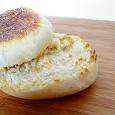
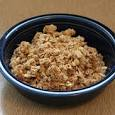

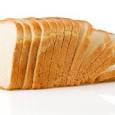
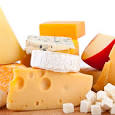

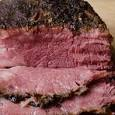
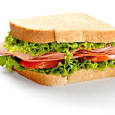
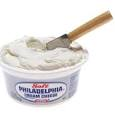
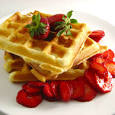
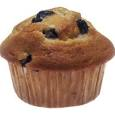
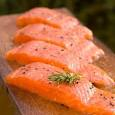
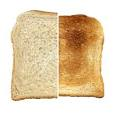
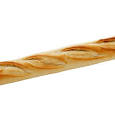
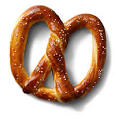

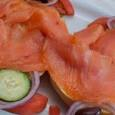
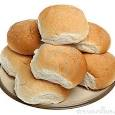
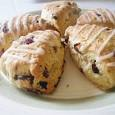

















Add your comment